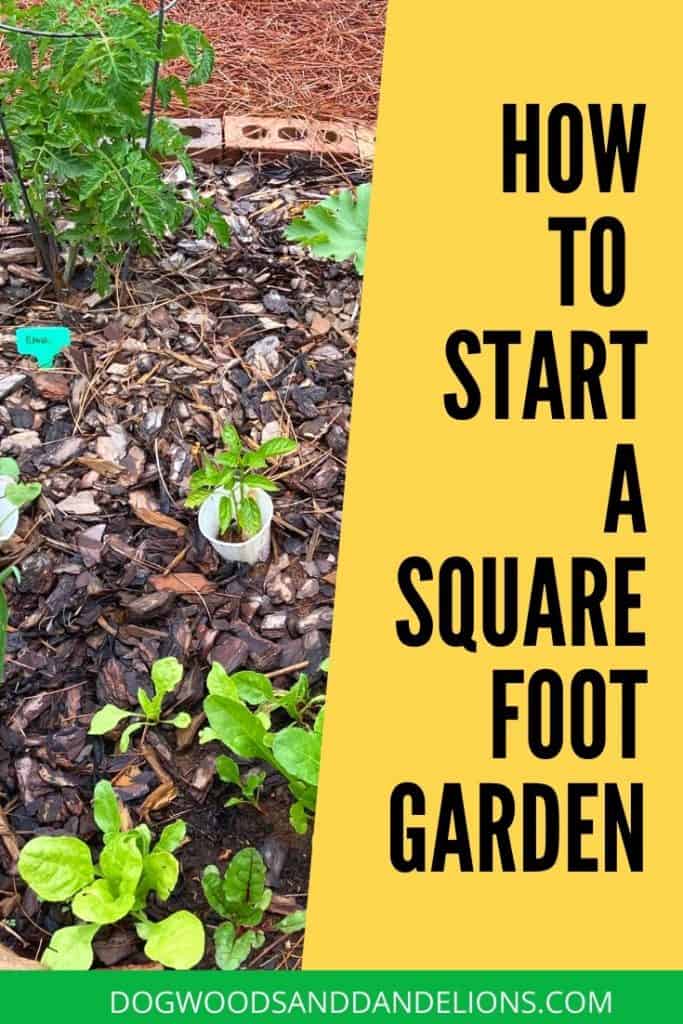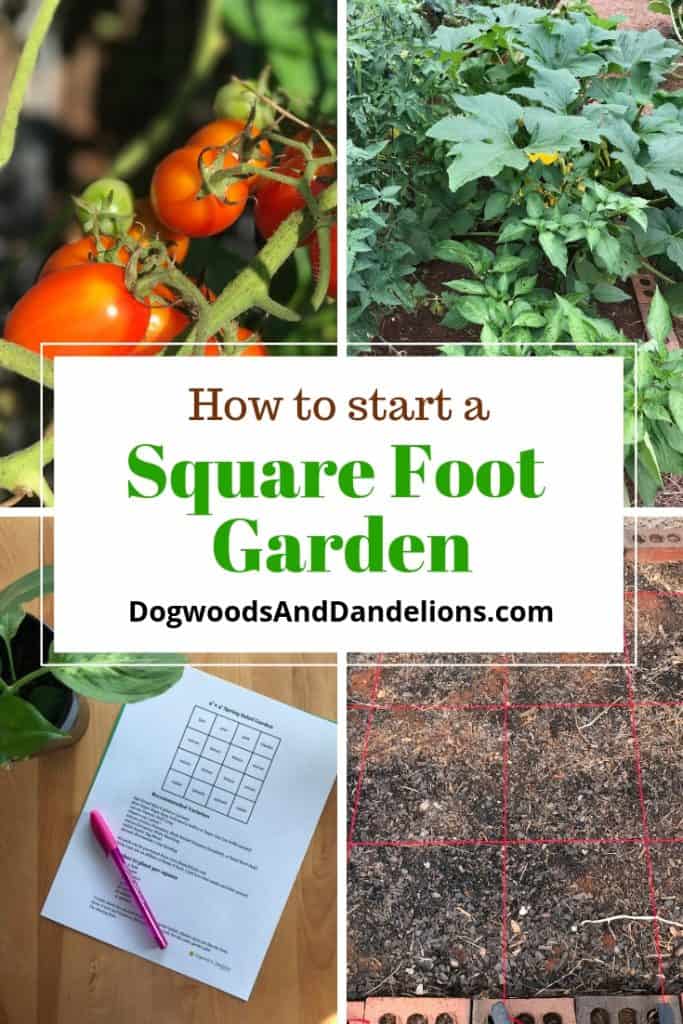How to Start a Square Foot Garden
Starting a garden can be quite intimidating. Where should I put my garden? How big should I make it? How do I get rid of the weeds? What kind of dirt should I add? If this is the first time you’ve ever tried growing a garden, I recommend you start a square foot garden.
Why Start a Square Foot Garden?
There are so many benefits to growing a square foot garden.
- A small square foot garden is easily manageable and doesn’t take up too much room. Starting small is one thing I always recommend when beginning a new garden. I don’t want you to become overwhelmed and begin to hate gardening. My goal is to have everyone grow something and love the process.
- When you start a square foot garden you get to taste the difference between store-bought and homegrown produce without committing to a huge row garden.
- In a square foot garden, you can try a bit of this and a bit of that. If you don’t like something you are growing, you can pull that plant out and start something else.
- You can also grow more vegetables in a smaller space than you can in traditional row gardens.
While the square foot method is often recommended for beginners, they are also a great method of growing vegetables for an experienced gardener too.
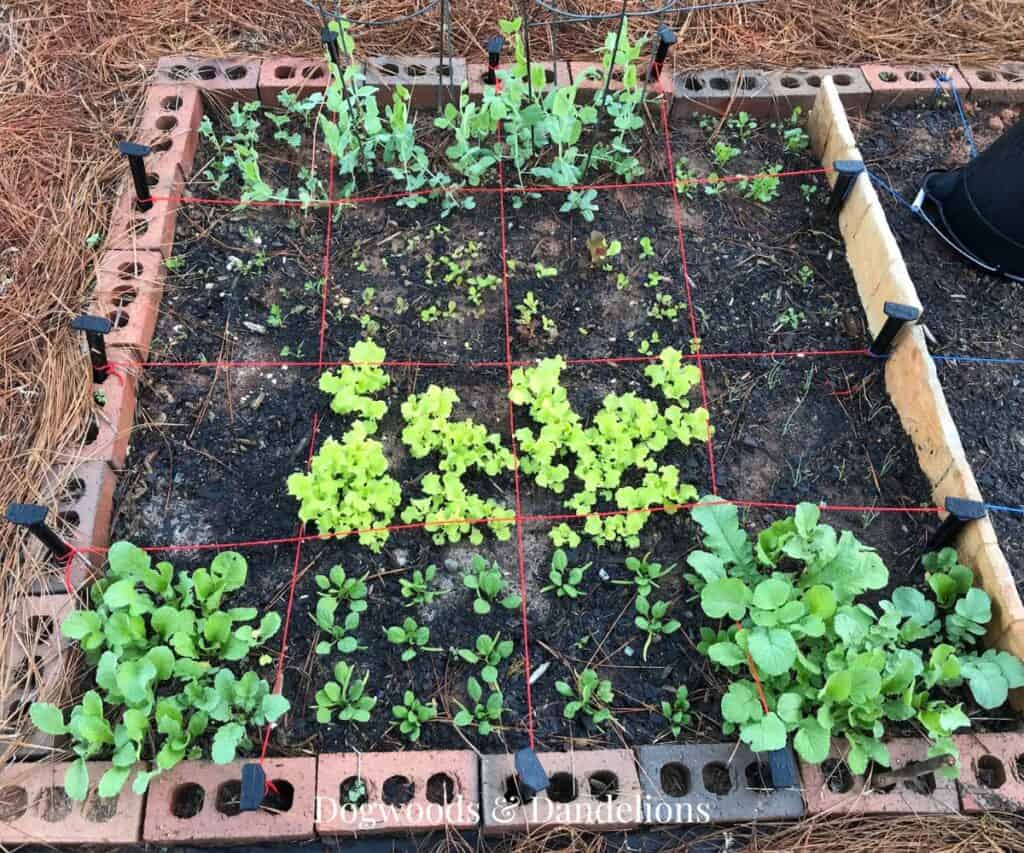
Affiliate Disclosure: Please note that some of the links in this article may be affiliate links and I may receive a small commission if you purchase something through a link. It will not change your cost. As an Amazon Associate, I earn from qualifying purchases. For more information, see my disclosures page.)
Where to Grow a Square Foot Garden
You can grow a square foot garden almost anywhere. Really. If you have a small area in your yard, you can usually grow something. You would be surprised at how much food you can grow in a 4′ x 4′ area.
Before you start your square foot garden, the first thing I recommend you do is look for an area that gets at least 8 hours of sunlight a day, preferably 10-12. It is hard to grow many vegetables without a lot of sun.
While there are some you can grow, like leafy greens and root crops, most vegetables that produce a flower need sunlight to turn that flower into a fruit. If all you have is shade, check out Attainable Sustainable’s post on Planting Vegetables That Grow In the Shade.
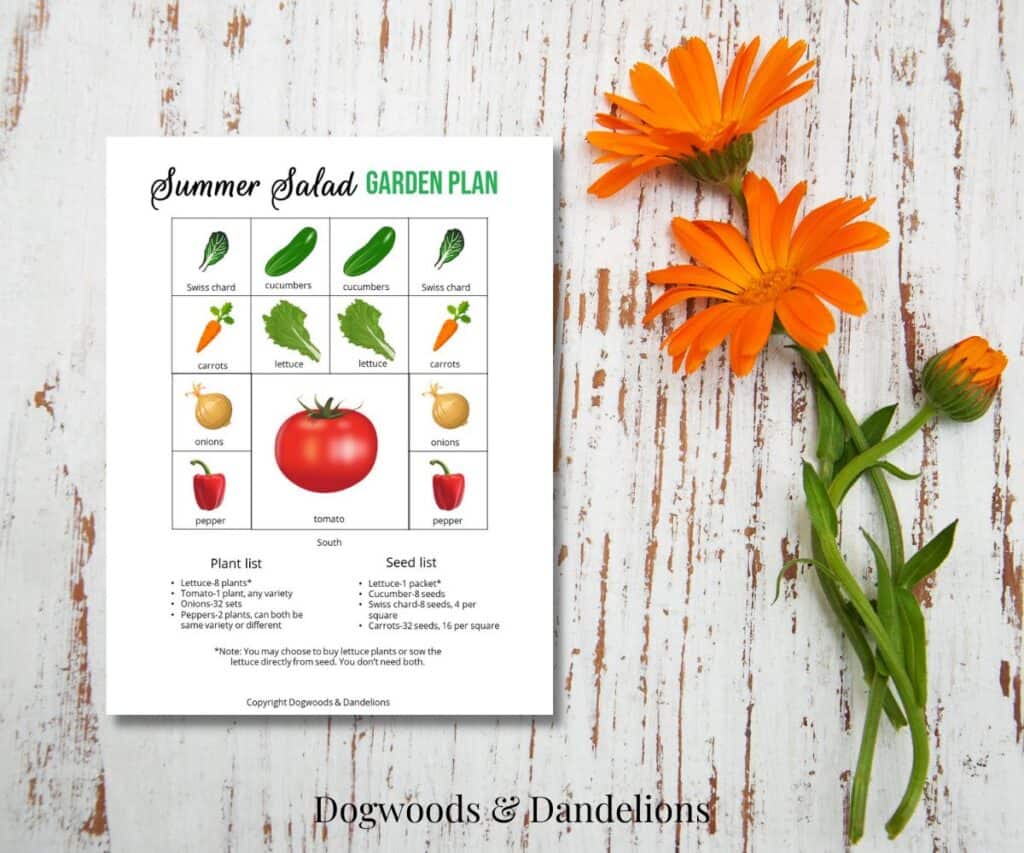
You also want to locate your garden area close to your home so that you will see it every day. If your garden is in the back corner of your yard, you aren’t nearly as likely to step outside the door and grab a fresh tomato to add to your salad for supper or a handful of basil for your pasta.
You might also tend to forget about your garden. Having your garden close means you will check on it more often and pick your produce when it is ready.
Being in close proximity to your house also means you are more likely to notice if you start to have a bug problem or if the garden needs some water.
This brings me to my next point…You want your garden situated close to a water source. If you have to haul a hose to the back corner of your yard every day to water, you are much more likely to give up.
Keep your garden as close to your home as feasibly possible, while making sure it gets the required sunlight.
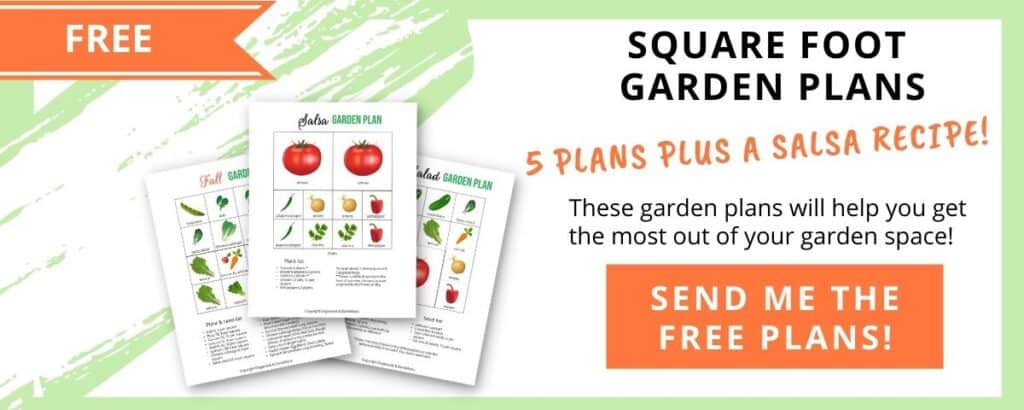
How to Build Your Garden Bed
Once you decide where you want your garden spot to be, you need to decide how you are going to make your raised bed. You can do-it-yourself using these easy directions or you can purchase a kit.
There are many different sized kits on the market, but again, I recommend starting small with a 4′ x 4′ bed if this is your first year growing a garden.
If you don’t want to build a raised bed with wood, you can also use cinder blocks, concrete blocks, or other materials. This post details more ways to build raised beds (and why I think they are perfect for a beginning gardener).
Once your bed is built, I recommend lining the bottom with cardboard. This serves two purposes. First, it will help kill the grass where your bed is going to be located.
You don’t have to dig out all the grass or spray it with chemicals. It also forms a weed barrier to prevent weed seeds from being disturbed.
Secondly, the cardboard provides food for the worms as it decomposes. I don’t recommend using weed-blocking fabric because it also blocks the worms from entering the soil you will add to your garden.
And worms are great for your garden. They create pathways that allow water and air into your soil. Worms break down organic matter like compost to a form that your plants can use. And, they leave behind castings, which is basically fertilizer for your plants.
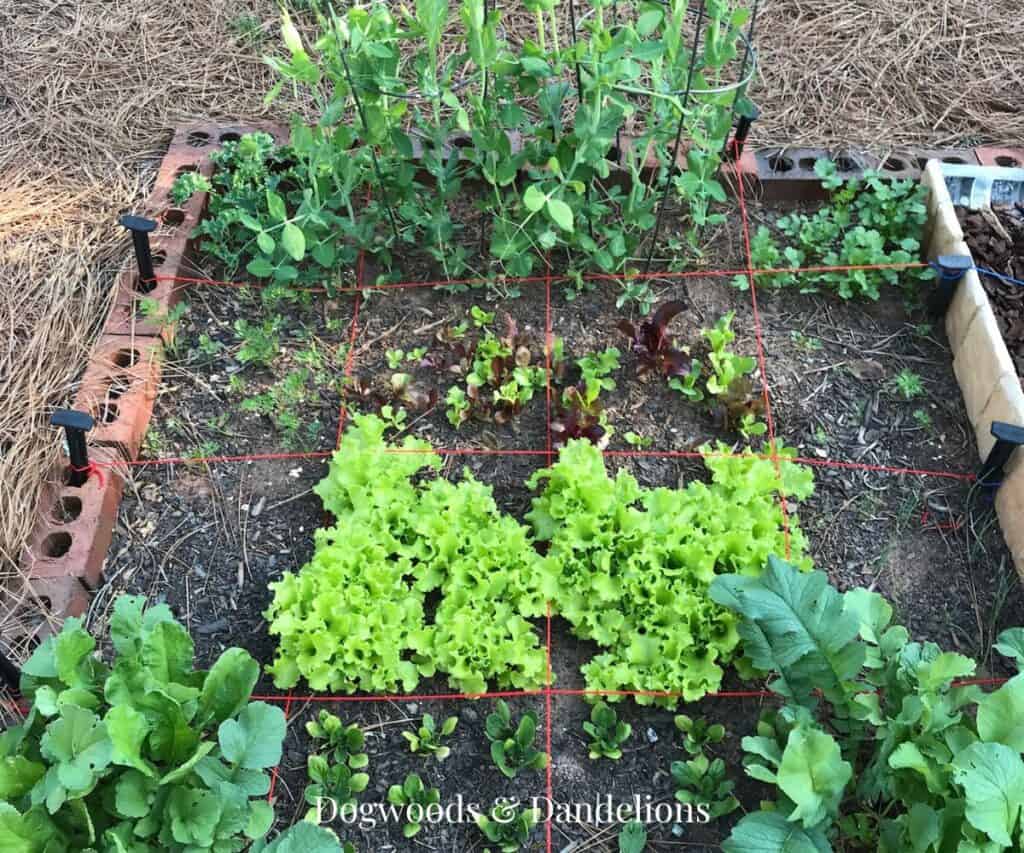
Filling the Square Foot Garden With Soil
There are many recommendations on what kind of soil to use to fill your bed. I personally think a combination of multiple types of compost (mushroom, cow manure, compost you’ve made yourself) and a few bags of good garden soil works best.
You don’t want to go to your local garden center and buy the cheapest garden soil you can find. You will have much better success with your garden if you spend the money on good dirt. Soil quality can make or break your garden.
For a 4′ x 4′ garden bed 6 inches deep you will need about 8 cubic feet of soil and organic material. If you are building your bed 12 inches deep, you will need about 16 cubic feet.
If you are building a different size bed or building one at a different depth, you can use this calculator to figure out how much soil you will need. For multiple beds, it will probably be cheaper to find a local garden center that delivers and order your dirt from them.
Making Your Grids for Your Square Foot Garden
One of the hallmarks of square foot gardening is the grids. You mark your garden area off in one-foot squares. So a 4′ x 4′ square foot garden will have 16 squares (4 x 4=16) to plant in.
There are many different ways you can make your grids, from complicated wooden frames to simple lines drawn in the soil. I’ve even seen people use old vinyl slats from wooden or plastic blinds to make their frames.
I tend to take the easy approach. Here’s why. Some vegetables, like tomatoes, take more than one square. (See below for a list.)
If you have a permanent grid, it is difficult to plant that tomato in the middle of 4 squares. My easy solution is to use a few short posts, stakes, (or even sticks from your yard), and some string or twine. You will need 12 of whatever you choose to use.
Place the stakes just inside the raised bed frame at one-foot intervals, 3 per side. Once all 12 stakes are in, you can tie a string across the bed from one stake to the next.
This is an inexpensive, simple solution, but if you want to plant tomatoes or squash, you’ll be glad you don’t have to work around a permanent grid.
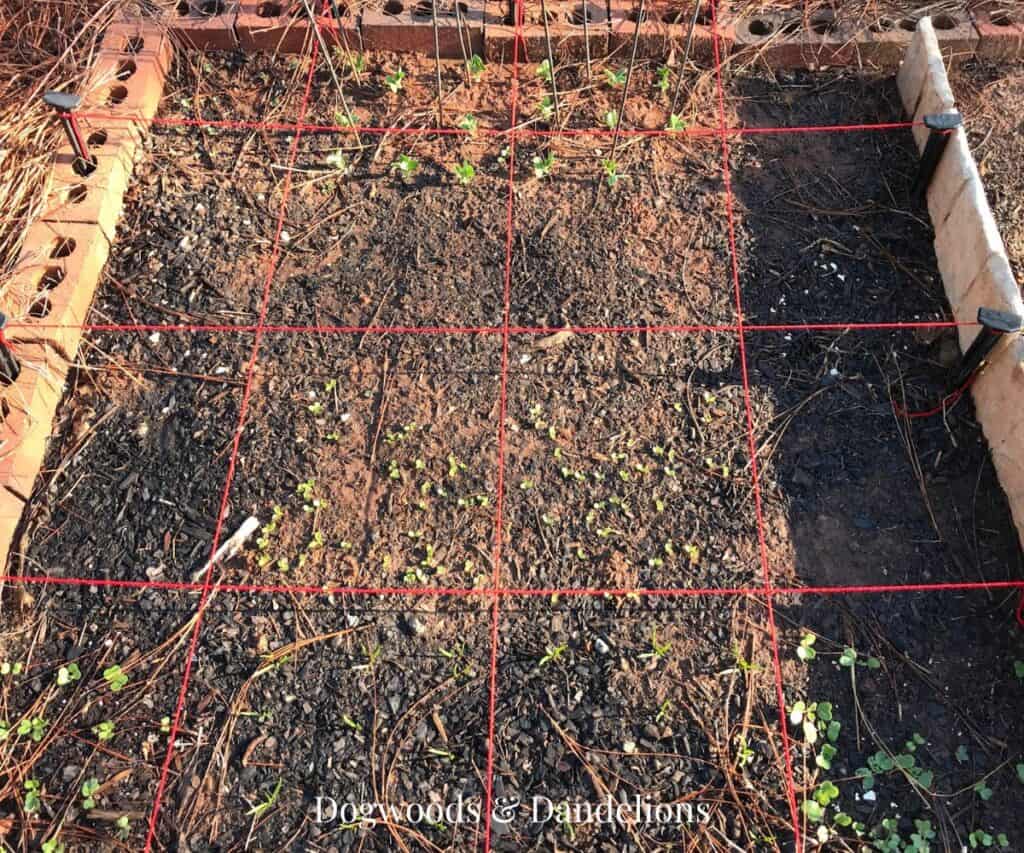
In the picture above, you can just barely see the red string I have used to mark off the squares in my garden bed. If I want to plant a tomato, I can gently move the string and plant my tomato in the center of four squares.

Plant Spacing in a Square Foot Garden
In square-foot gardening, most plant spacing is determined by how many plants you will put per square. This can often be a bit closer than in typical row planting.
A few larger plants will take more than one square. Below is a list of the number of plants of each variety you can plant per square.
Plant 16 Per Square
- radishes
- carrots
- onions
- beets
Plant 8 or 9 Per Square
Several places suggest planting 8 per square of these crops. But 8 doesn’t fit easily into the grid. I usually go with 9 per square (3 x 3) and have never had any trouble.
- peas – See my post about how to grow peas for more information.
- spinach
- beans – Bush beans are easier for beginning gardeners but you can grow pole beans as long as you have a trellis.
Plant 4 Per Square
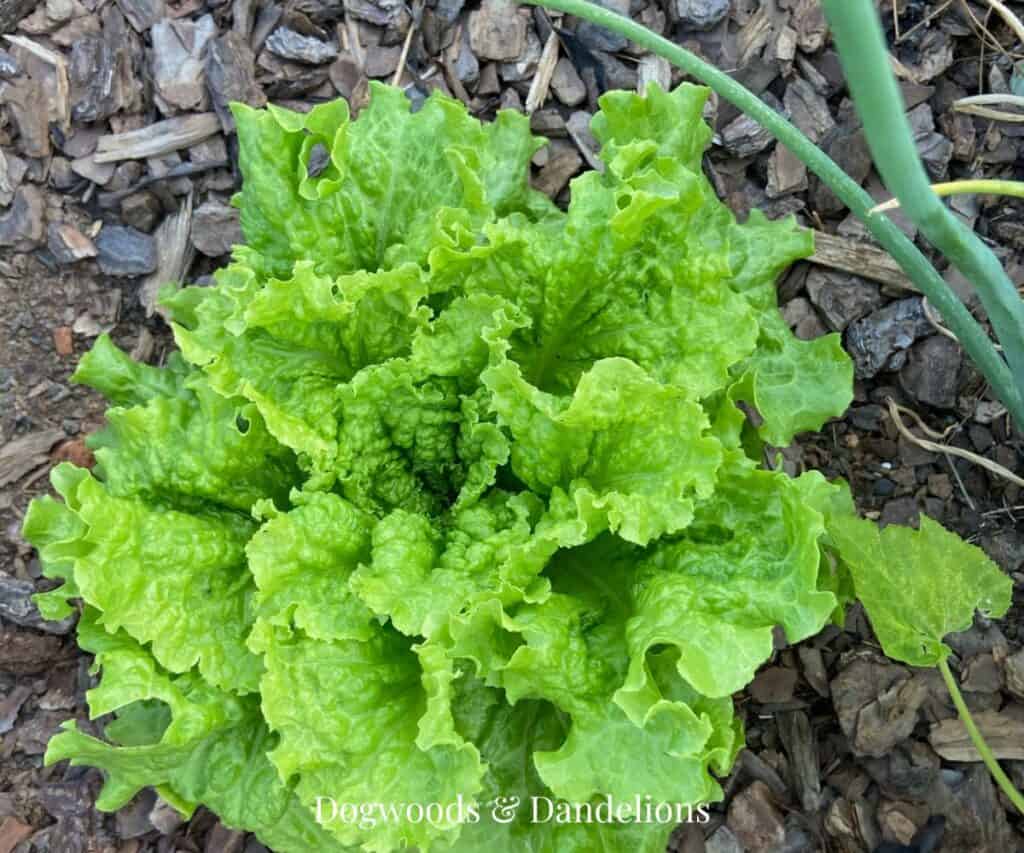
- lettuce
- swiss chard
- herbs such as parsley, cilantro, chives, & oregano
- potatoes
- strawberries
Plant 2 Per Square
- cucumbers – Grow on a trellis for best results.
Plant 1 Per Square
- broccoli
- cauliflower
- cabbage
- eggplant
- peppers
- basil
Plant 1 Per 2 Squares
- cantaloupe – Grow cantaloupe on a trellis
- winter squash – Grow vertically on a trellis.
- watermelon – Just like cantaloupe be sure to grow on a trellis. Otherwise, they will take over your entire garden.
Plant 1 Per 4 Squares
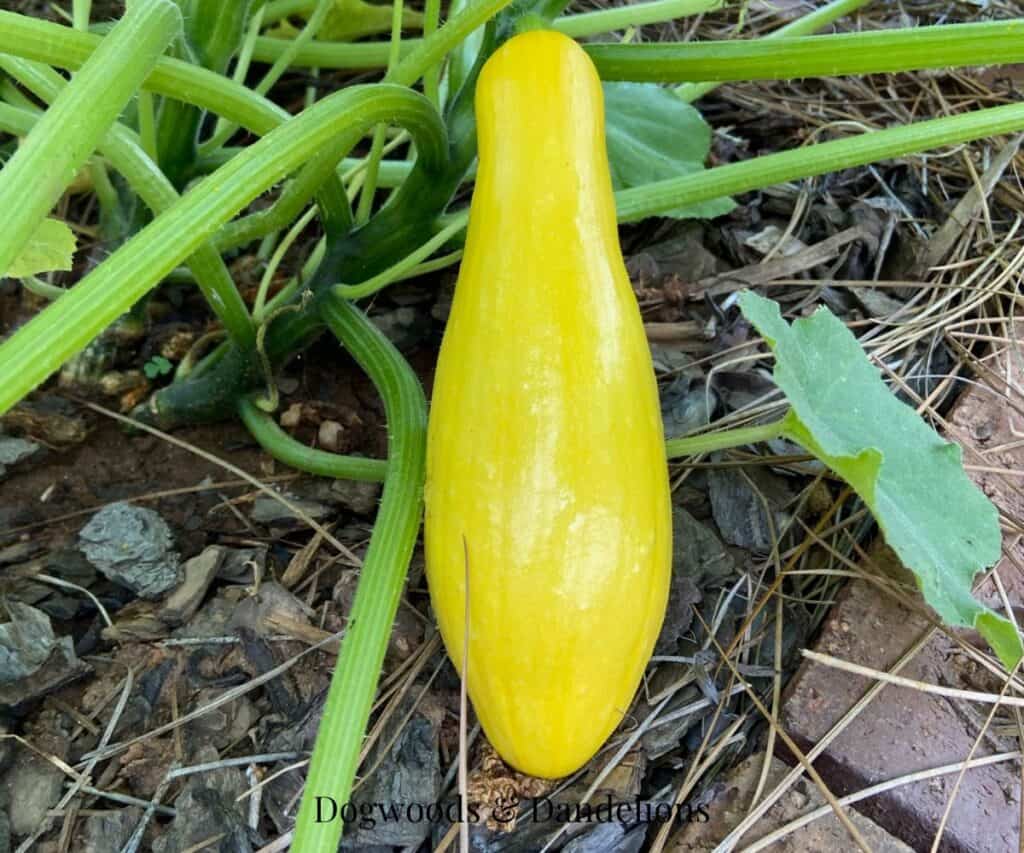
- summer squash – For best results, choose a compact variety like Sunburst if possible.
- tomatoes – They will either need to be staked or grown in a cage.
- zucchini – Just like summer squash, choose a variety that is compact such as Raven if possible.
A Few Other Vegetables I Don’t Recommend Growing in a Square Foot Garden
While I love square foot gardening, there are a few vegetables and herbs that I don’t feel are best suited to the square foot gardening concept. I’ve shared my list below as well as the reasons why I don’t think these crops are best suited for square foot gardening.
If you want to plant any of these, I recommend creating a bed specifically for these crops.
- asparagus – It is a perennial and it takes 3 years to mature from seed. You don’t want to put asparagus in one square and have to leave it there forever.
- corn – Corn is one of the few crops I recommend planting as a row crop. Corn is pollinated by the wind, and you need room to grow a good bit of corn to have a successful harvest. Planting one square of corn is a recipe for failure.
- mint – Mint is very invasive and can be hard to get rid of once you start. I HIGHLY recommend growing mint in a container if it is on your “must grow” list.
- okra – Okra is another crop I still recommend growing in rows. It would take at least one 4′ x 4′ bed to grow enough okra for a meal. If you want to grow okra, I suggest planting it in a separate bed.
Free Square Foot Gardening Plans
So while square foot gardening isn’t for everyone, it is perfect for beginning gardeners. Even though I’ve been gardening for almost 15 years now, I still prefer to grow most of my crops this way.
I have 4′ x 12′ beds, but I sub-divided one this year into 3 beds so that I could grow the square foot garden plans right alongside you. I’ll be adding additional plans as the year goes on to help you grow your best garden ever.

For more information, check out my post on How to Choose the Vegetables to Grow in Your Garden. I also highly recommend the book, All New Square Foot Gardening by Mel Bartholomew. His Square Foot Gardening Foundation recently came out with a third edition, but I much prefer the second edition.
Using the square foot gardening method can allow you to grow a lot of vegetables in a smaller garden space. it is a high yield method that relies on rich soil and good drainage to grow a variety of crops in a limited space.
You will spend less time weeding and use less water than in a traditional garden. The good news is that this means less work for the average gardener. Square foot vegetable gardening is the easiest way to grow a garden in less space
